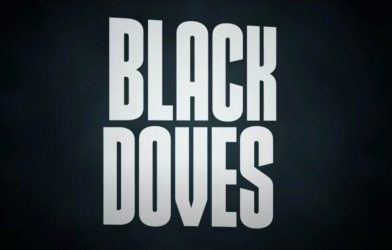Have you ever wanted to hug a mountain? That’s how I feel when I see Sylvester Stallone climbing one. Frozen, breathless, crooked face contorted, body bulging in a wet, grey T-shirt — those peaks of muscles, those valleys of organs, those streams of blood vessels — plastered against the Dolomites, before the camera pulls back to show the vast plane of granite as, bit by bit, he himself becomes part of the canyon (in fact, a seamless digital blend of painting and climbing wall). In her review of Cliffhanger, the 1993 action-adventure thriller in which this scene appears, Janet Maslin describes Stallone as “a smaller, more mobile and no less impressive piece of scenery”. And he knows it. More than any of his hard-bodied contemporaries — Arnold “Austrian Oak” Schwarzenegger, Jean-Claude “Muscles from Brussels” Van Damme, Dolph “Grace Jones’s Bodyguard” Lundgren — Stallone shaped his physique through the 1980s and ’90s not as a weapon (or not merely) but an extension of the environment around him. “He always had this supreme consciousness of how a body looked on film,” says Chris Holmlund, editor of The Ultimate Stallone Reader.
For Cliffhanger, Stallone trained hard to build his climbing muscles. The results are so spectacular that, when he posed nude on the cover of Vanity Fair as Rodin’s “Thinker” the year of its release (under the headline: “Sly’s Body of Art”), you could have mistaken him for the real thing.
But thinking is not what anyone wanted from Stallone. That is in part what precipitated Cliffhanger, which is celebrating its 30th anniversary with a sequel, starring Stallone, that was announced in May. Since Rocky and Rambo, the heroic underdogs that made him famous, Stallone, who wrote the first and co-wrote the second, has wanted to prove he has a brain to go with that bod. But his attempts to showcase his versatility — from the musical Rhinestone to the comedy Stop! Or My Mom Will Shoot — were mercilessly panned. Cliffhanger was a return to form. “Let’s face it, there was a bond between me and Rocky and Rambo,” Stallone told The New York Times in 1993. “Over the years it became difficult to tell the fictional and real characters apart. When I try to exert some artistic leverage and show the other side of my personality, it’s rejected. OK, I accept it.”
Cliffhanger falls under the mid-budget standalone adult film (rated R for explicit language and violence) that everyone keeps lamenting no longer exists, despite Liam Neeson, Denzel Washington, Gerard Butler and now Stallone, doing their best to keep it on life support. A vertiginous thriller about a grieving ranger fleeing a bunch of stranded bank robbers in the snowy mountains, Cliffhanger offers the kind of primitive virility loved by 1990s conservatives, a demographic that has resurfaced in reaction to a cultural shift to the left.
Mark Gallagher, who has written extensively on action movies and their stars, even has a name for this chest-thumping genre: paleo heroism. He describes it as: “This return to the roots of elemental masculinity, where we don’t have to think about things like women, or family, or nine to five jobs, or, you know, wearing regular clothes. We can just be out there in nature.”
Executive producer Mario Kassar doesn’t remember how he got the script for Cliffhanger before he sent it to Stallone, whom he had met back when he had the rights to First Blood. Kassar’s independent film studio, Carolco, was a prime example of that brief period in the 1990s when screenwriters could become millionaires overnight. He used foreign cash to attract names with cachet such as Stallone who, despite being on the outs with critics, had yet to bank about $18mn for Judge Dredd. Even then, no one wanted to make “Die Hard on a mountain,” as Cliffhanger became known. “Everybody was telling me, ‘Oh, don’t make movies in the snow, they never work’,” Kassar explains, before adding: “I was financing my own movies, so it didn’t matter.”
Despite the reported price of $70mn, he says Cliffhanger cost closer to $50mn to make. The budget bloated due to the logistics around shooting in the Dolomites, which were chosen for access to the cable cars and helicopters needed to lug equipment up and down. Transport took hours at a time; thin oxygen levels wore on the team, and the weather could change on a dime. Not to mention the stuntman, Simon Crane, who wanted to get into the Guinness Book of Records so badly that he convinced director Renny Harlin to let him ride a zip line mid-air between aircraft (mere minutes of screen time that cost $1mn and Stallone part of his fee). “These days, the studios are cutting down costs. They’re getting more and more cautious with big movies,” a despondent Harlin told the press at the time. “This may be the last time a film-maker will be allowed to go to a foreign country with a big budget and all the toys and bells and whistles that really make a big adventure movie.”
Whether or not Cliffhanger was a worthy epilogue, it was made at a level that even big budget action movies these days struggle to match. Enviable attention is paid not only to its momentum but also to its aesthetics, whether a result of the experience of its crew or the time and tools they were afforded or all of the above. With the advent of cheaper and easier digital effects, for instance, I can’t imagine the bad guys’ plane crash would have been conducted with miniatures and a sped-up frame rate like this one was. That gives it a spectacularly tactile quality so that when the jet slides towards the edge of a mountain, you feel it teetering.
Then there’s the sequence in which Stallone is brawling with one of the robbers while careening down the side of a snowy mountain in the dark (this was done in studio), only for it all to abruptly end with a slow-motion swing of Stallone’s pick into the ice while the baddie plunges into the black abyss Sunken Place-style.
There’s a particularly bleak scene when a beloved character is shot by a machine gun, the magnitude of which is expressed by muted sound and a slowdown of the rounds going off one by one. Even just a quick shot in which a bunch of baddies are standing atop the mountain surveying the scene, shows their silhouettes against glowing lights, an homage to E.T. Everything is thoroughly thought through.
Of course, it’s the cold open (in every sense of the word) that really makes Cliffhanger. It’s a clear day atop the Dolomites and Gabe Walker (Stallone) and another ranger, his friend Hal (Michael Rooker), and Hal’s newbie climber girlfriend, Sarah (Michelle Joyner), are getting picked up by helicopter after an ascent. But the rock they have scaled is so spindly that, to get to the chopper, they must zip line across a canyon. Hal (Rooker performing his own stunt) makes it across the line and then, an incredibly nervous Sarah starts her painstaking journey. Joyner is arresting in this sequence, her eyes terrified, her body radiating anxiety. She looks completely out of her depth and, once she starts moving, of course, a buckle breaks and she drops out of her harness, holding on for dear life so as not to plunge to her death. Stallone is also great in this scene, assuring her like a pro pilot on a crashing plane, while his body does the opposite, speed-belaying to her location. This is where Joyner really kills it. “Please don’t let me fall,” she pleads with the kind of desperation you know is a death sentence.

Part of the reason this scene hits so hard is that Harlin knows how to shoot these mountains in all their dispassionate glory. So even though three other people are watching Gabe and Sarah try to survive, they are utterly alone. This is the strength of Cliffhanger, its ability to always keep in mind the vertiginous threat of the mountains. One scene even uses an “elevator” to swoop the camera up from a lower ledge with the bad guys on it to the one above to illustrate how far up and precarious Gabe’s position is.
Harlin watched several mountaineering films in preparation and noted that the difficulty of navigating these locations meant that capturing anything was considered a “victory.” He decided to do one better by keeping the camera in motion to keep viewers on edge. There’s no frame of reference on these peaks so he created it, not only with stunts — Stallone flying through the air on a metal ladder pulling away from the rocks, Stallone soaring across an exploding wooden bridge — but more just by knowing what to do with the camera.
Cliffhanger earned $255mn, topping the box office the weekend it premiered in 1993, one of the six consecutive decades for a Stallone movie to do so. It returned him to critical favour and to his international fans. Gallagher thinks the film was a global success because it didn’t need much translation. Other countries had traditions of outdoor adventures, but the characters and the story could cross over as well. “Even the thematic conflict and the back-story of the failure and death,” Gallagher explains, “there’s nothing culturally specific about that.” And nothing gender specific, apparently. Forty per cent of the Cliffhanger audience was female, a fact which did not surprise me.
What made me want to hug Stallone while rewatching Cliffhanger as a grown woman (as opposed to a 13-year-old kid in 1993) was a very specific quality that is missing from his action contemporaries. When he was born, Stallone’s face was paralysed by forceps, that’s what gives him that famously lopsided look. But all of his features — those sloping brown eyes, that little Roman nose, those rosebud lips — sit forlorn, concentrated in the centre of his face. “He’s always so hangdog,” is how Holmlund puts it. “You just want to take care of him.”
An actor who looks like that doesn’t have to do much to provoke feelings in the audience, particularly an audience of women. With that deep voice, that sad expression, just a hunched shoulder here, or a side eye there, and you will do anything for this huge galumph. It’s why you buy that Janine Turner (who plays his love interest in Cliffhanger) would forgive him for abandoning her (post Sarah tragedy) as easily as she does. And Stallone, with his underlying dissatisfaction with a world that expects him to be something he isn’t, kind of plays into it. How does he continue to appeal on screen without sacrificing his sensitive soul? “I guess the only thing is to make [his character] a nice guy,” Holmlund suggests. “He just doesn’t play many villains.”
Holmlund sees Cliffhanger as an offshoot of both Rocky and Rambo: the haunted man out in nature. As she writes in The Stallone Reader, these action heroes “re-established traditional values, promoting a rugged, macho individualism that was nevertheless in tune with the times’ emphasis on fitness and vigilante defence.” The last point, Holmlund explains, has to do in part with the Vietnam war. “The ethos in the 1980s was we lost in Vietnam,” she explains. “No one wanted to say that. And here were these big guys who stood for America.” This was an America where men survived no matter what, like their caveman ancestors. This, paleo heroism, has been a “crucible” for the action-adventure genre since the start. Out of the western — “The entire genre,” says Gallagher, “predicated on taming nature while also taming the native population” — came not just vigilantism in the 1970s but also location shooting in the wilderness, which itself went back to the 1930s and the arrival of portable cameras (see 1972’s Jeremiah Johnson and Deliverance). Despite its technological advances, Cliffhanger’s Italian production gave the film this same traditional authenticity, which Stallone’s brand also contributed to. While Schwarzenegger went from bodybuilding to acting, Stallone appeared in bodybuilding magazines as an actor. To Gallagher, that said: “I may be this fantastic figure on screen, but I’m also the real deal.”
The next decade saw a slow trickle of mid-budget nature vs. man adventures. Vertical Limit, which Kassar considers a remake of Cliffhanger, appeared in 1994, the same year as The River Wild with Meryl Streep white-water rafting for her life. Extreme Ops, about extreme sportsmen in the Alps stumbling on a warlord, came out in 2002, a year before the best mountaineering movie ever made, Touching the Void, a British doc about a climbing expedition gone very wrong. Open Water, released the same year, took the threat to sea in another real-life tale, this one centring on two forgotten divers.
But with improved CGI came the possibility of taking nature from spectacle to fantasy. Gallagher thinks the apotheosis was 2000’s The Perfect Storm, the adaptation of Sebastian Junger’s non-fiction book about the Andrea Gail, a fishing vessel pummelled into nothingness in the middle of the sea. The film not only introduced digital water but made it a main character. As technology got better and better and the individual star less and less important (and intellectual property more and more), casts got bigger. No longer could a film’s success be pinned on a lone Stallone, who followed suit in 2010 with a packed action cast in the nostalgic Expendables franchise. Any wilderness digressions were largely confined to a hyper-fictional parallel world occupied by James Bond, Ethan Hunt or various superheroes. In the wake of reality television and social media, says Gallagher, true stories about survival in nature bobbed up.
There have been major adventure releases with big stars like Leonardo DiCaprio (The Revenant, 2015), which made back almost four times its budget of $140mn, and Everest which made back over three times its budget of $55mn the same year, but, more often, paleo heroism is treated modestly these days. Robert Redford starred in All Is Lost in 2013, about a man lost at sea, which was made for only $8.5mn. More recently, Mads Mikkelsen did a one-hander in Arctic, about a man lost in the polar wilderness for a mere $2mn in 2018.
Despite all of this, it’s not so weird for Stallone to announce a follow-up to Cliffhanger in the year 2023. “You look back on films, and very few hold up, because usually they’re made with the same kind of technology and mentality of the times like the ’80s, the ’70s,” he recently told The Radio Times. “Now Cliffhanger, like Demolition Man, holds up . . . ”
Nostalgia for the 1990s also persists, not to mention the right-leaning love affair with the paleo hero. Stallone himself remains more visible than any comparable action star of his era. “He controls his brand,” Holmlund says, noting his extensive writing and producing credits, “a lot more than any of the others do.” He’s working on the next Expendables, but also on the first series built around him — Tulsa King by Taylor Sheridan in which he plays an ex-con mafioso rebuilding his life in Oklahoma — and his first reality series (The Family Stallone). Not to mention he just released a Netflix doc, Sly, on the heels of Schwarzenegger’s (Arnold). He still has a huge fan base, Holmlund notes, among the kids who watched him with their dads, who are now watching him with their own kids.
The long-awaited Cliffhanger sequel will be directed by Ric Roman Waugh. Which makes sense considering he has been the mid-budget go-to action guy for Gerard Butler. He is using Top Gun: Maverick as a touchstone for how to bring back a decades old action film and is excited to leverage the advances in sound since then. Waugh told Collider magazine that, in the sequel, Gabe will have a daughter and a mountaineering company in the Dolomites and have to deal with another tragedy: “And of course, there might be some nefarious bad guys that show up in the Italian Alps, and all hell breaks loose.”
Like Harlin, Kassar will not be involved this time around. But he’s blasé about new action movies he sees as rehashing a formula he helped establish. “Copying somebody is a compliment for me,” he says. “To be copied is a compliment.”
Follow @FTMag on Twitter to find out about our latest stories first








